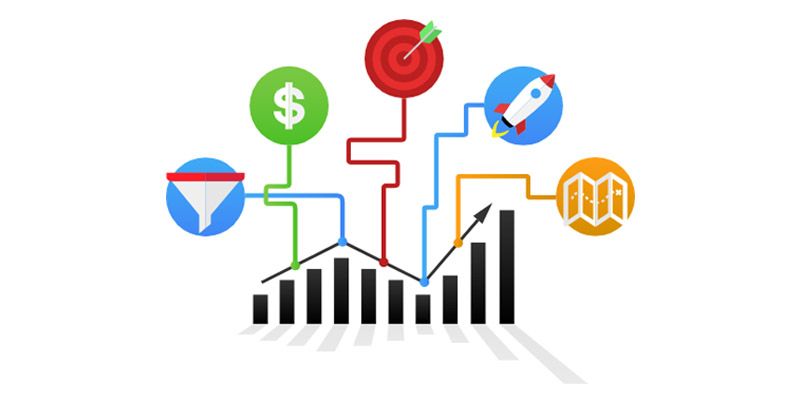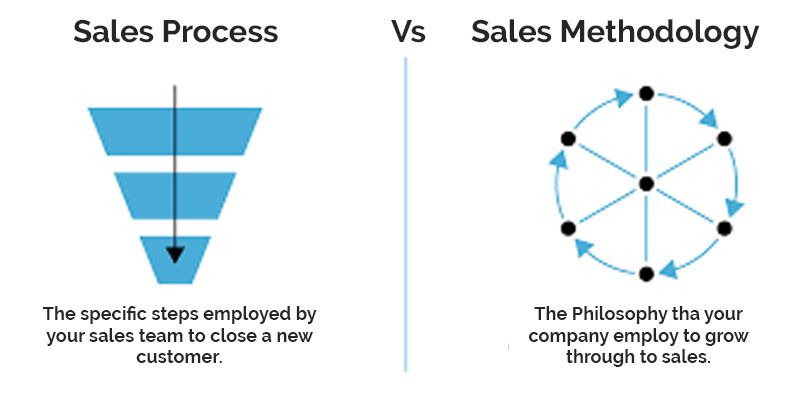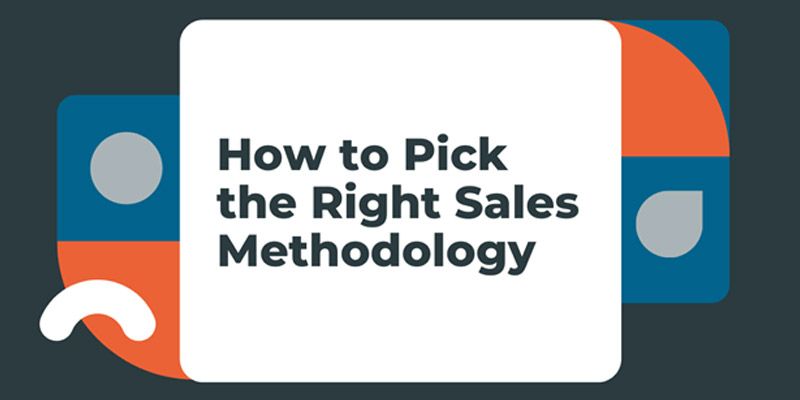Does it not sound obvious that execution of business processes can simplify the completion of any type of task irrespective of whether it remains simple or complex?
It is generally assumed that processes do increase more efficiency, consistency, and accuracy among employees and also enhances their interactivity with customers.

What Exactly Is the Sales Process?
- A sales process is usually known as the process that enhances business, sales representatives, customers, and products.
- It also boosts conversions by ensuring all representatives of companies are providing customers with positive and consistent experiences.
- Although building a scalable and repeatable sales process can turn out to be tough especially when the target audience differs for every business.
- In the area of commerce, it is called the exercise that consists of a repeated set of steps that a sales team takes to drift a prospect from an early stage lead to a closed customer.
- It is known to be the structured strong sales process that is constantly known for closing the deal by offering them a framework that they need to follow.
What exactly is the difference between the sales process and sales methodology?

- Before understanding this you need to understand the widened difference between the two. Even though both of them are closely linked, their application remains poles apart.
- The sales process is usually viewed as the concrete set of actions directed by the sales team that is followed to close a new customer.
- Whereas a sales methodology is noted to be the structured framework that assists managers in finding ways how they can carry out the sales process and it allows them to grow their business.
- The sales process is usually considered as the high-level man steps that are taken by the sales team whereas the sales methodologies are coined to be of different ways that guide your team to approach the sales process.
Why Is Choosing a Sales Methodology Equivalent to Laying the Foundation of Your Team?

- The foremost reason sales methodology is a pre-required strategy before initiating any sales deal is because it forms the founding stone of an on-going business project.
- Sales representatives are usually equipped with a variety of options to incorporate the constantly changing strategies that can simplify the customer’s buying journey and even ensure professional, impactful, and even sow the seeds of enticing interactions that occur between customers and their sales team.
Know some of the finest points guiding how to create a sales process
Here are some of the most concrete and beneficial ways that should be taken into account while channelizing the sales process.
- Hold on for a moment and recall the last couple of deals that you just closed.
- Target your goals based on your historical data to enhance efficiency, agility, and effectiveness, and in turn, it would allow you to forecast for the next year’s sales too without understanding how the generation of leads occurs.
- Comprehend the needs of the prospect and also analyze your companies’ ability to react to their needs.
On the other way round, marketers need to align their sales and marketing strategies from the bottom because nearly 75% of the customers create their decision halfway through the selection process.
Perhaps this is a reason why forming a full-fledged integrated marketing and sales process which is the firm key for any marketer to successfully close the deal.
How can one access qualified marketing leads from the rest?
- This step is measured as a very important step before converting any sales lead into the deal. It also means that prospects do carry some interest as they interact with you by attending a webinar or even by signing up for a newsletter.
- From the facts reflected in the recent survey, a marketer needs to reach a prospect with at least 10-15 marketing impressions so that he/she can follow your call to action even though the marketed message remains unseen.
- It also allows marketers to deliver marketing qualified leads to sales and allows the sales team to nurture without getting spammed emails and try to overwhelm your customers.
- Even the way through which one engages with customers does differ at every step of the process. So, apart from rushing to complete all the set of things it has become completely necessary for the marketers to close the deal with a better strategy.
- The idea of a marketer is to involve the prospect in letting him sign-up for the newsletter even before he begins to use services.
- Before creating any marketing strategy think of prospects’ needs by putting yourself into his shoes. Try to derive more value by analyzing long-term benefits that your prospects might get.
How exactly does a sales process seem to be like?
It is usually drawn from the fact that the documented sales process enables the business strategies of the organizations.
- It allows one to deeply understand the prospect’s needs and pains.
- It allows the sales team to work more efficiently by keeping the time constraints in their mind.
- It also allows one to have a measurable repeated process with accountability.
- It also allows marketers to posses consistent sales outline irrespective of how the organizations’ representatives approached the people.
Steps Involved in the Sales Process

1. Prospect
- The salesforce technique of prospecting is known as the process of sourcing new and early-stage leads that begin through the sales process.
- It is the most necessary part of the sales process and usually works as the constituent of the sales workflow.
- It involves online research on sites like LinkedIn as well as on Quora. Prospecting usually takes place at different conferences as well as industry events.
- It also allows you to prospect by seeking the current clients who could refer your services to individuals who might be interested in taking your products.
2. Connect and Qualify Actual Leads
- The second step of connection is the most significant step that involves representatives initiating contact with the sets of early-stage leads to collect information.
- It comprises forming strategies to segregate unqualified leads from the sets of actual leads.
- Usually, a representative is known for determining the connectivity as well as in analyzing the interest of the consumers.
This step allows representatives to ask qualifying questions such as-
“What is the role of your company?”
“What do you do day-to-day?”
“What sort of problems are you trying to solve?”
3. Research
- Research is the most important step in the sales process because it allows sales representatives to learn more about each prospect about the company.
- It allows representatives to offer a more decisive and personalized experience and eventually improvises the likelihood of the closing deal.
- It is also the key part of this stage because it enables sales representatives to understand prospects’ challenges along with needs and even allow them to establish the marketing strategies of the brand.
- Many times, it has been seen that a good salesperson fully understands the company better than the individual prospect that those set of people who work there.
4. Present
- The presentation step is generally used when the salesperson tries to present a formal presentation and even exhibition of the product as well as services of the prospect.
- Although it seems to be a time-consuming step it usually plays a greater impact on the sales process and is executed for most serious projects.
- Perhaps, this is the reason that many connecting and qualifying steps are considered to be quite critical.
- Every detailed presentation should be executed in a way that it meets the specific prospect needs and demands and also covers the pain points.
- In this step, a sales representation might come along with a senior executive to exude the magnitude of service that they execute while doing the business with the company.
5. Handle Objections
It is not at all easy for a salesperson to let his goods sell even without getting any sort of negative feedback from the service-buyer.
Moreover, this is the anticipated step in the sales process. To tackle the unnerved objections from consumers’ side, the sales representative should do thorough research and go through each set of presentations to clarify objections and questions that help one to design better products that seamlessly suit all their needs.
6. Close
- It is the least but most important part for any salesperson while negotiating a deal. It is usually referred to as any late-stage activities that work when the deal approaches for so long.
- This step differs from company to company and does include things such as delivering the quote, proposal, or even a negotiation.
- This step adds-on more benefits like a mutually beneficial, contractual agreement that lies between the prospect and seller.
- Once the deal gets closed, then the salesperson receives a commission that is paid on the price which has been negotiated by them.
Conclusion
The sales process generally carries the ultimate goal that allows the salesperson to sell the goods directly to the consumers. This process enables a marketer to play a huge part in transitioning customers to a different team which might be responsible for onboarding and customer success. It bridges the communication void between the seller and a buyer and reinforces the value of self-belongingness in the customer’s mind.
DepositPhotos – business revenue
The post The Sales Process Guide to Raising Business Revenue appeared first on Tweak Your Biz.
source https://tweakyourbiz.com/business/revenue/sales-process-guide

No comments:
Post a Comment